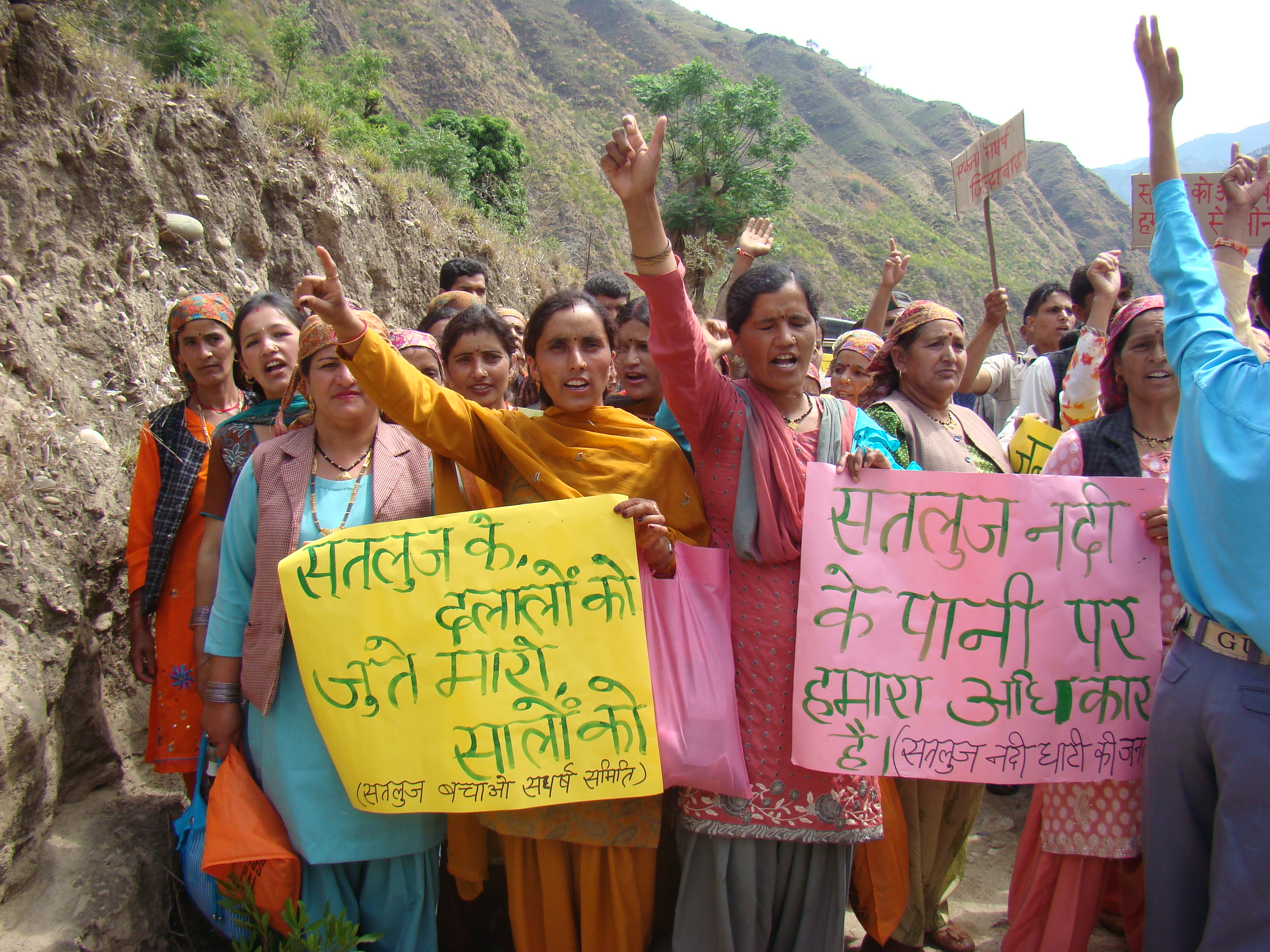Descriptions of the Sutlej, a glacial river originating from Kailash Mansarovar in Tibet traversing through the Himalayas and Punjab plains in India and meeting the Indus in Pakistan, never fail to boast of its magnificence, speed and depth. Over the last few decades, however, this perception has been challenged, as the Sutlej has been reduced from this transcendent symbol of the natural ecosystem to a mere ‘water body’ to be exploited for generation of electricity. Apart from Bhakra, the four operational/underconstruction projects, Nathpa Jhakri, Rampur, Baspa II and Karchham Wangtoo have proven to be severely damaging both environmentally and in terms of their socio-economic impacts in Kinnaur. The tunneling of the river has led to drying up of the riverbed; tunnel construction has had other impacts – soil erosion, landslides, changing climatic conditions, drying up of natural water springs has further affected livelihood activities like apple cultivation.
There are also several concerns related to violation of environmental norms, short circuiting of clearance procedures and other illegalities in these projects. This is also evident in the local opposition that these projects have met and the number of court cases lined up against them. But the existing projects are less than 30% of the estimated 10,000 Mega-watt (MW) of power potential of the Sutlej. Starting from Kinnaur to Shimla, Mandi and Bilaspur the river has been broken down into pieces, more than 30, – each allotted to private and public hydropower developers. The Luhri Hydro ElectricProject financed partly by the World Bank, coming up in the Shimla, Kullu and Mandi districts of the state is one and a very significant such piece of the valley.
The 750 MW Luhri Dam project will be spread over a length of 40 kilometers which includes a 38 km long twin tunnels of 9m dia, 86 meter high dam, 10 bridges (while the government deemed fit to build only 2 motorable bridges on the river for use by the local people since independence!), 8 adit points, massive infrastructure construction including a helipad. More than 360 hectares of land will be usurped by the project of which a large percentage will be forest. 6 tehsils of 3 districts will cover the affected area. The sheer magnitude of this project is indicative of the extent of impacts involved.
It is in this context that Him Dhara, an Environment Research and Action Collective takes a critical look at the project, highlighting the severe shortcomings of the EIA report and the key concerns and demands of the local population who are opposed to the dam in its report, A River Under Arrest. The report documents the several loopholes inbuilt in the very design of the Luhri Project – the location and the length (which is one of the longest in the world) of the tunnel being the most problematic.It explains how the EIA report submitted by SJVNL has failed to carry out a fair and detailed assessment of the environmental and socio-economic impacts and more so the impacts of the twin tunnels – the most alarming of them being absence of nearly 80 villages above head race tunnel of 38 kms from the list of Project affected families. A copy of the report has been submitted to the Ministry of Environment and Forests’ Expert Appraisal Committee on River Valley Projects.







1 thought on “A River Under Arrest: Critique of the Luhri Hydro-electric Project on the Sutlej River”
Satluj Bachao Jan Sangharsh Samiti Satluj Bachao Jan Sangharsh Samiti asks MoEF not to grant environment clearance to Luhri HEP | Himdhara
(March 28, 2012 - 11:07 am)[…] For more details contact Nek Ram Sharma, Secretary, Satluj Bachao Jan Sangharsh Samiti, District Mandi – +91 9805703407; +91 9817019281 Read more about the impacts of the Luhri Project […]
Comments are closed.